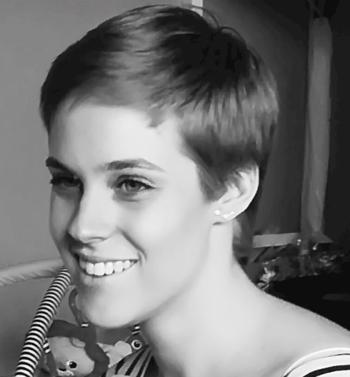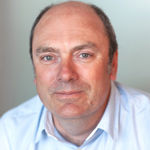
It’s difficult to comprehend how women remain underrepresented in the newsroom. Study after study has analysed low female representation in journalism and the results of these studies are behind the inception of organisations including Women in Journalism (WIJ), Digital Women Leaders and the International Women’s Media Foundation (IWMF), created to provide resources and support networks.
In 2018, the European Journalism Observatory (EJO) found that just 23% of articles in eleven European countries were written by women compared to 41% of men (the balance was made up of un-bylined / agency articles). The latest Global Media Monitoring Project results echo these findings; the number of female journalists reporting on stories was less than two out of five and predictions for the 2020 results suggest little progress will have been made.
Digital is a prime source of real estate for media brands and the upcoming AOP Digital Publishing Awards in October is an excuse for peers to come together and celebrate the ground-breaking work achieved in the industry. Are women underrepresented here, too? If so, it could well be that a career in the digital landscape generally does not appeal to the majority of female journalists.
On the flip side, historical male dominance in the newsroom is another potential factor. There’s little focus on gender staff equality in the digital space, so what do those at the forefront of digital journalism think?

Janine Gibson, digital editor at the Financial Times (FT): “Look, there are more women than there used to be and that's great. We have a new female editor-in-chief in Roula Khalef at the FT and that's wonderful to see.
When I first joined the online team at The Guardian to launch mediaguardian.co.uk over fifteen years ago, I went to work for Emily Bell who was the editor of the website. The managing editor, culture editor and news editor were also all female. I think digital has long been a place where women have felt able to establish themselves and enable other women into senior jobs that maybe weren't so accessible in print.
There are now women editors and leaders around every area of the media industry, but in overall volume, there are still way too few female leaders from middle management upwards. That goes as well if not double for men and women of colour, people from working class backgrounds and triple for people who intersect underrepresented groups. Also, the media remains too homogenous.
What makes me optimistic is that a new generation of leaders will not need to be persuaded that a more diverse newsroom leads to more diverse audiences. Therefore, it's just a question of attention and commitment.”
There are still way too few female leaders from middle management upwards.
Janine Gibson

Zoe Dickens, digital editor at The Gentleman’s Journal: “I’ve been very lucky in my career to have had a series of amazing female managers and editors. Across the board, I think that regardless of publication or industry, women are making great headway at the top levels of digital publishing.
I’m not sure it would yet be right to say it’s female driven; this won’t happen until there are more women learning coding and taking control of the back ends of these websites as well as the front end, but I definitely think there is more gender equality in digital publishing than there is in print.
Digital-first journalists are in a fairly privileged position in that, at many publishing houses, digital teams are growing while print teams are shrinking. This means there are a lot of opportunities. However, in my experience, journalism courses have been slow to introduce their students to the range of jobs available in digital journalism. It wasn’t until I entered the industry that I even heard the job titles SEO editor, community editor or growth manager and this is where much of the expansion is taking place.
It is well documented that women are far less likely than men to apply for jobs they don’t feel fully qualified for. Therefore, at present, many of these roles are going to men and this means they are gaining digital experience, not women.”
It is well documented that women are far less likely than men to apply for jobs they don’t feel fully qualified for.
Zoe Dickens

Natalie Cornish, acting digital editor of Red: “I’m not sure digital is becoming more female driven; I think there are plenty of opportunities to progress in digital journalism for both male and female journalists. Although, in my experience, women have always been at the forefront of digital developments, especially in newsrooms and the media in general. In terms of the prominence of women in the top jobs, my current boss (the chief digital content editor of Hearst UK) is female, as are my previous four bosses.
Digital was seen as a secondary area to print for a long time (which was usually very male heavy) and for that reason, I think lots of young female journalists (like me) saw plenty of opportunities for growth and ownership in that area so moved from print to digital early on in our careers. Now ten or so years on, those women (and lots of male journalists who did the same) are in senior digital positions.
The future for women in digital journalism is incredibly exciting. We’re working in a fascinating time politically and culturally, where women’s issues are at the cutting edge and female voices from all corners are finally being given platforms to tell their stories. It’s a huge privilege to be at the forefront of that.”
Women have always been at the forefront of digital developments.
Natalie Cornish

Dr Alexandra Borchardt, senior research associate at Reuters Institute for the Study of Journalism, University of Oxford: “Digital has always been an option for women in journalism.
Unfortunately, for the most part, it’s because many of the low paid, less prestigious jobs have been in digital as opposed to secure, very well paid jobs in TV, radio, print.
Now that everyone wants to be a digital champion, lots of digital talent gets hired at traditional companies. This is a good opportunity for women. However, from what I’ve seen in the industry, compared to men, women tend to have too much training to begin with and they need to be promoted to learn on the job. It is very often assumed that digital is all about tools and tech, but the tech is easy to adopt.
The real challenges are in making changes and people management; this is where many women are really strong, and there are more women in data journalism and investigative journalism than is commonly assumed.”
There are more women in data journalism and investigative journalism than is commonly assumed.
Dr Alexandra Borchardt

Richard Reeves, managing director of the Association of Online Publishers (AOP), points to the female representation of judges for this year’s AOP Digital Publishing Awards (of the 33 judges, 17 are women) as well as the Digital Editor of the Year Award being presented to female winners in both 2018 and 2019. He says, “Whenever we host events and discussions, we always strive to have a fair representation of the industry to ensure a balanced perspective, and this approach extends to our judging panels, too.
We encourage feedback at all our events and endeavour to address and meet the concerns and needs of attendees. A big part of this is making sure all voices have an opportunity to be heard. When confirming the judges for the AOP Digital Publishing Awards, it was just as much about selecting voices of authority based on merit as it was about ensuring those voices represented a cross section of the publishing industry.”
A big part of this is making sure all voices have an opportunity to be heard.
Richard Reeves

Nina Goswami, creative diversity lead at the BBC, discusses the broadcaster’s 50:50 Project which is helping to deliver on their commitment to increase female representation across the board to better reflect the public they serve. She says: “The concept initially came from Ros Atkins, the presenter of BBC News’ Outside Source programme, and from his idea, it has grown to include over 550 teams within the BBC, all tracking and recording female representation in their content. Across news, sport, entertainment, factual, music and more, there are several thousand content-makers all contributing to this huge collective action.
We’re proud to say, it’s been really successful and is now having an impact outside of the BBC, with more than 50 organisations from the world of media and beyond signing up and adopting the project’s methodology. For BBC teams, we record representation for programmes on air, on screen and also online, so it’s certainly had a positive impact on our digital journalism output, changes that are becoming embedded in the way we produce online news content.”
We record representation for programmes on air, on screen and also online.
Nina Goswami
The urgency for media outlets to push their forward-thinking digital strategies and adopt the latest trends to introduce new and innovative ideas has become crucial in the crowded market. But, unlike the countless number of studies analysing the number of women in journalism as a whole, analysis for digital-only is sparse and virtually non-existent.
Furthermore, it’s outdated and disappointing that in 2020, a society that’s forever discussing the need for women to be awarded the same opportunities as their counterparts, the majority of bylines in Europe are attributed to men. However, as the case studies in this article have suggested, there are some promising signs for women looking to develop their careers in the digital landscape and to continue being game changers in a progressive field.
This article was first published in InPublishing magazine. If you would like to be added to the free mailing list, please register here.












